About matt furniture and the shiny one we've talked before. We have said which is easier to maintain, which is harder, what are the advantages and disadvantages of choosing one or the other. But there is another point of view from which the choice can be viewed. It is that of the producer, the passionate carpenter who works the wood with love and dedication and who hopes that, after the varnish has been applied, the beauty of the wood will not be lost and its value will even increase. So, for these wood lovers, which is the best choice, matt varnish or gloss varnish?
First of all it must be said that it is very important what the client wants and it is good to respect this, especially if the client comes with a project made by an architect or designer. They have certainly placed the furniture in a context and it must be executed in such a way that, in the end, everything is coherent.
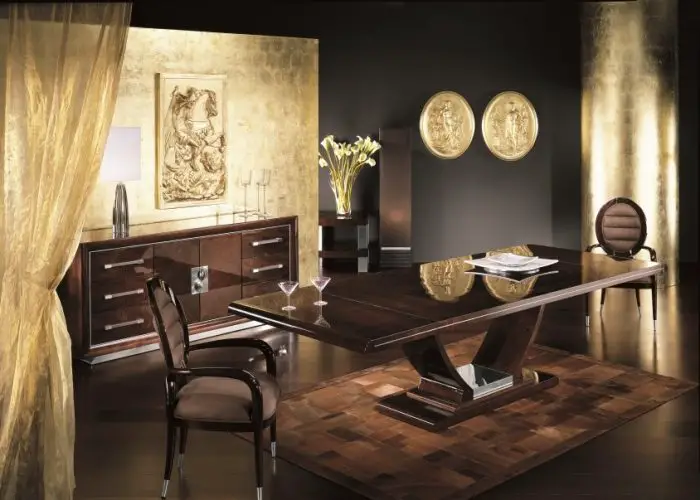
However, there are also situations where the customer leaves it up to the manufacturer, or where the craftsman works on something for which he also chooses the finish. The title suggests that there is a safe choice and a risky one. While the application of a matt lacquer is not too much of a problem, the application of a gloss finish, especially a mirror gloss, is difficult and several conditions have to be met to get a quality result.
The shine of furniture is often equated with the existence of a lake. Some people think that furniture has not been lacquered when it does not shine. This is not so. The degree of gloss of a varnish is given by its ability to reflect light and ranges from 0 to 100% and can be measured with a device called a glossmeter. Within this range there are several levels. From 0 to 7 we speak of deep matte (or natural effect), 10-40 is matte, 45-65 semi-matte (or satin as it is sometimes called in production), 70-90 gloss, 90-100 high gloss or mirror gloss.
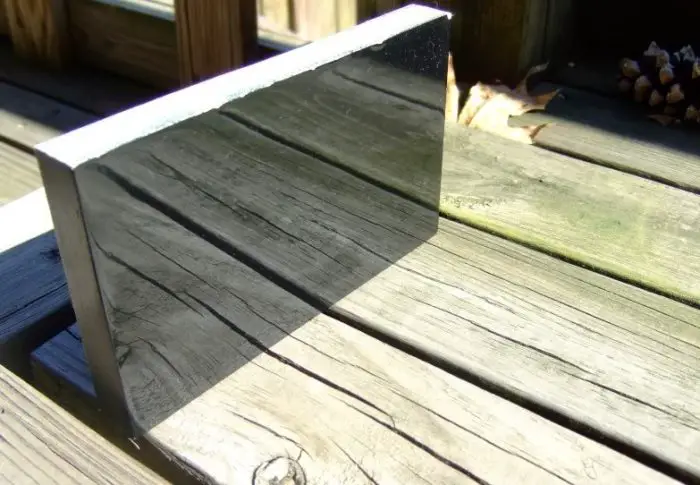
For a furniture manufacturer it is much simpler to produce matt furniture. The higher the gloss level, the more difficult it becomes to achieve a beautiful surface, the most difficult being to achieve a mirror gloss. If you want to achieve glossy surfaces, from 70 upwards, it is not enough for the lacquer to have that gloss. Several other conditions must also be met:
- The working environment must be very clean. Any traces of dust trapped in the film are more visible the glossier the lacquer. As it is difficult to maintain a dust-free environment in the absence of pressurized spray booths or stapled finishing lines, polishing is needed to remove impurities
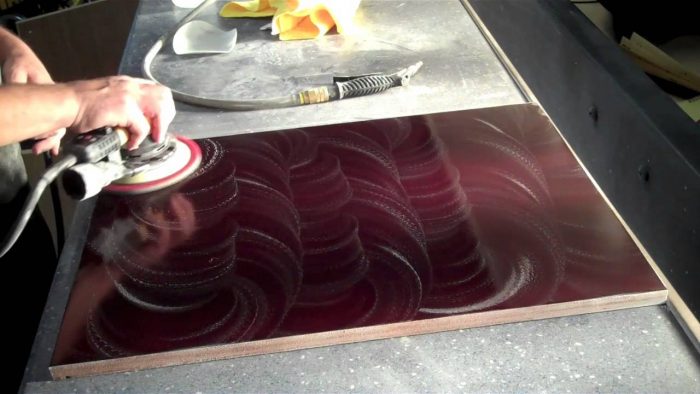
- Gloss lacquer must be applied on a very well laid and sanded primer. The film must not have the appearance of orange peel, not to be very thin, not to have dust or air bubbles included. That is why hard primers with a large body are used, which can be well sanded to provide the necessary base for the varnish. To give you an idea of what the primer should look like before the gloss varnish is applied, I can tell you that gloss determinations are made by applying the varnish to a piece of glass.
- The varnish should not dry too quickly to give the film time to set and spread as well as possible. If it is not well spread it does not reflect light well and polishing is needed to remove surface imperfections.
In order to see the difference between a mat varnish and a gloss varnish, an experiment can be carried out. Apply matt varnish and gloss varnish to the same room, on 2 different pieces of wood. After drying you will have the impression that the dust has been attracted by the gloss finish. In fact the dust has deposited the same on both samples, but it is only visible on the gloss lacquer.
Gloss finishing is also difficult because it highlights any defects. If the woodwork has not been well done, the slightest scratch will be highlighted and magnified.
The gloss level of the varnish is also chosen according to what you want to achieve and the resulting furniture must be in keeping with the space where it will be placed. If you want a table top with look as natural as possible, then a deep matt varnish will be chosen and the finish will be as thin as possible (2 thin coats, one of primer and one of varnish) so as not to have a noticeable film.
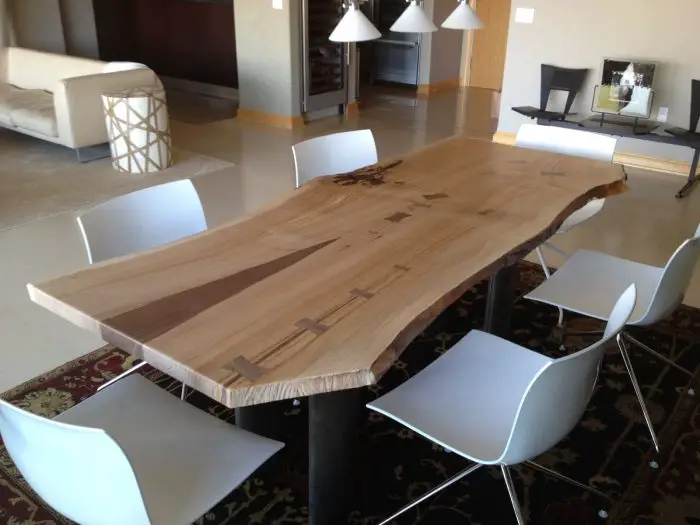
Also, if you're working with rustic or reclaimed woodEverything looks more natural if you apply matt lacquers.
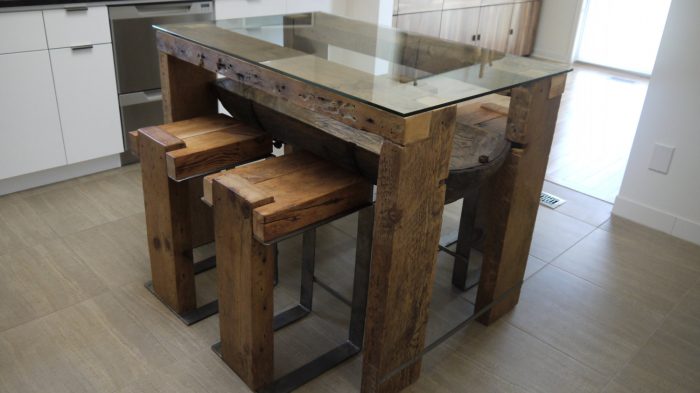
When you are looking for a luxurious piece of furniture, you can choose a gloss lacquer in addition to an elegant design. Gloss has always been associated with luxury, with wealth. After all, gold and precious stones shine, right? And to keep it simple, you don't necessarily need a mirror sheen, you can also use lacquers with a gloss level above 70. In addition, gloss varnishes, because of their high transparency (due to the lack of a matting agent), bring out the natural beauty of the wood.
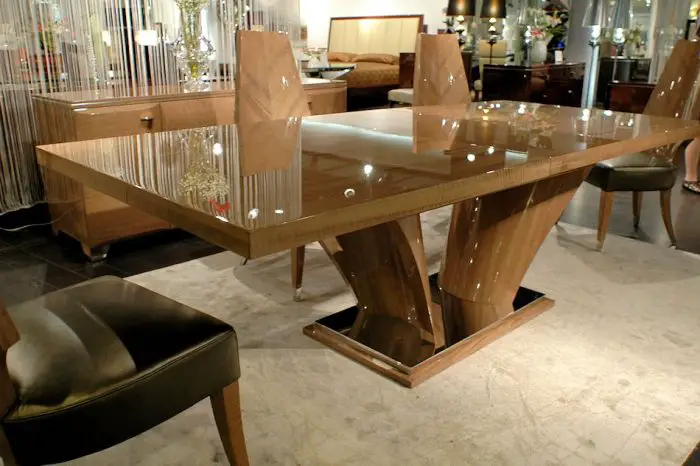
The easiest and most "covering" is to use varnishes with a 30-40 gloss. These are also the best-selling varnishes. I say "covering" because they will gloss just enough to show that the furniture is varnished, but without the problems of higher gloss varnishes.
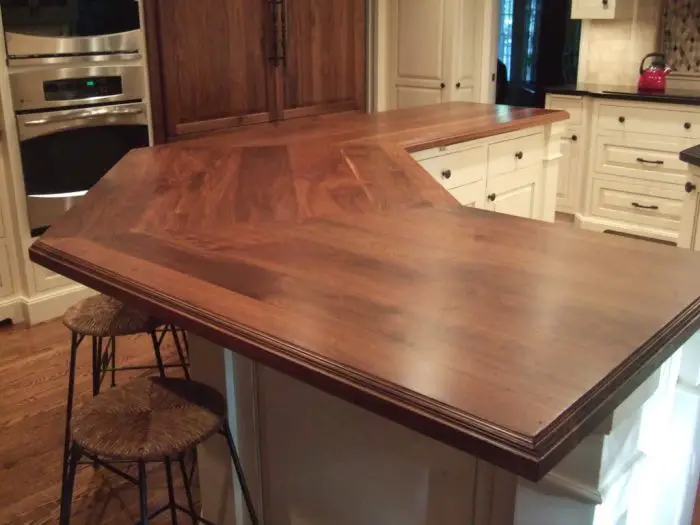
And from a maintenance point of view, the matt furniture is also the winner. Fingerprints are less visible, dust is also less noticeable, you don't need to polish it, just wipe it clean, no fine scratches from dust particles.
When it comes to furniture polish, it's not a question of beautiful or ugly. We are very different and what is very beautiful for one may be impossible to look at for another. There are fashions and styles that can influence our choices, but in the end it's all about what we like. But it is important for a manufacturer to choose the finish they can make and to tell the customer what they may be faced with when choosing a particular finish for their furniture.

































Congratulations on the interesting articles! I read with pleasure.
Thank you!
Very interesting article. I need a varnish for my interior staircase's fir wood countertops. Initially I was going to go for a glossy one but after reading the article I changed my mind and will opt for a "covering" varnish with a gloss grade of 30-40. However, I don't know which brand of polish to choose and how to measure the gloss level because I don't have a glossmeter. Is this gloss level written on the box? Can you recommend a brand ?
And I have another concern. In this video the primer is applied, left for a while and then 2 coats of varnish are applied over it. Between the application of primer and varnish I don't see any finishing (sanding). Is this correct?
On the boxes of DIY products it doesn't exactly say glossy, but it does say glossy or matt. Get the matte one, usually its gloss level is 30-40.
I don't know which video you are referring to, but normally you should sand the primer after drying. Sanding helps both the adhesion and the nice appearance of the film. Sanding removes raised grain, gas, orange peel, anything that ruins the look of a film. My recommendation is to sand the primer before varnish application.
https://youtu.be/BntHwrC2Wdg
What does DIY mean?
DIY (do it yourself) products - products from DIY stores, like the ones in the link you put above, that you use to do various things at home. These products are not industrial, they are not the ones used in factories.
Thank you! You've been very helpful. All the best
Hello
I am painting on wooden boards; please advise me which varnish I could use so that applied both on the painted and on the unpainted area of the wooden board I can get a matt varnish that does not distort the painting by light reflections. Unfortunately I don't see any way to attach a picture of a work. The wood plate is partially painted the unpainted area acting as a frame.
I was thinking of masking the two areas one at a time with paper tape and applying an oil on the wood and a water-based varnish on the paint, but I don't know if problems occur in the contact area. I have tried waxed serac which seems good for both surfaces but affects the colours a bit.
Thank you.
Hello. If the paintings are made with water-based colours, you can use a solvent-based varnish (acrylic, for example) with a low gloss (between 0 and 10) on top. This way you will have no interaction between colours and varnish and no gloss.
You can also use oil and water-based varnish. Apply the varnish first and after it is completely dry you can apply oil to the protected area. There will be no repulsion in the contact area. If you apply the oil first and then the varnish, or apply them at the same time, then incompatibility problems may occur.
All the best.
Hello,
I want to varnish a solid pine bed with a matt clear varnish. Do you think this is good: https://www.dedeman.ro/buzau/lac-pentru-lemn-spor-incolor-mat-interior/-exterior-0-75-l/p/5014513 ?
Will it dry well?
Hello!
It is an alkyd varnish that dries more slowly (min 24 hours) and the smell will persist. For bedding it is better to choose a water-based (water-thinnable) interior varnish. Don't choose universal varnishes, good both indoors and outdoors, like the one mentioned. Outdoor varnishes should be more elastic and for this reason they are not very hard, they scratch easily.
All the best!